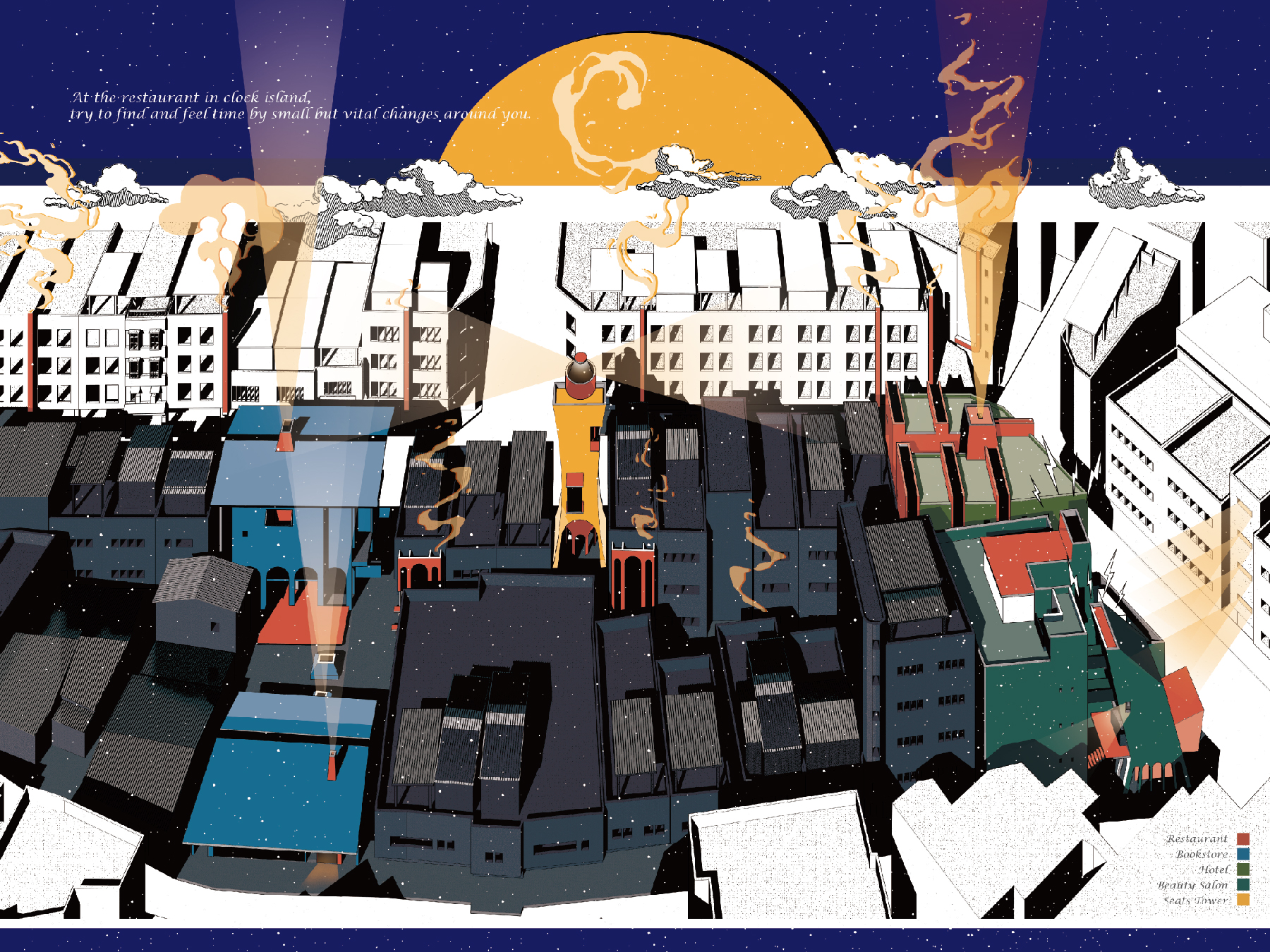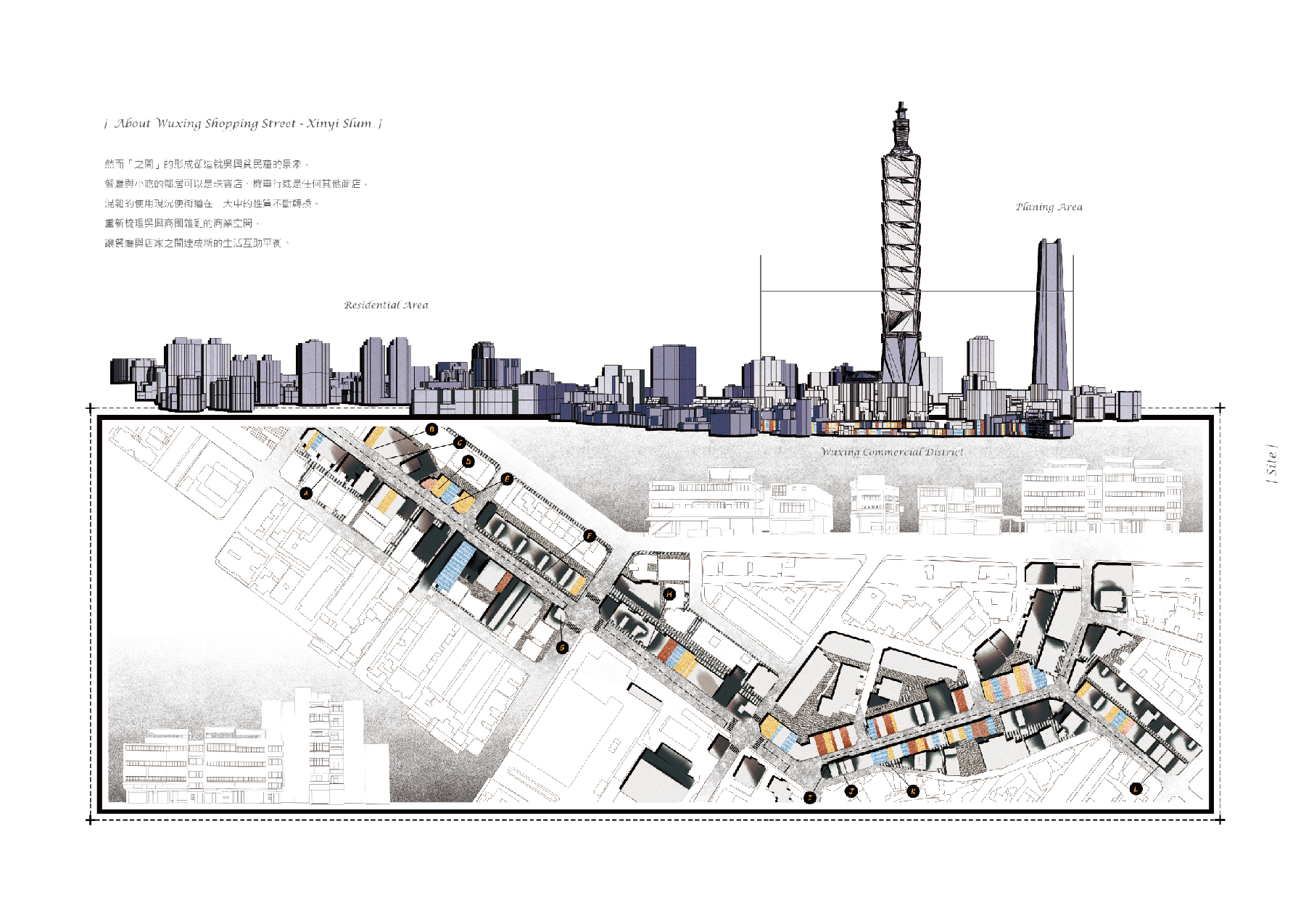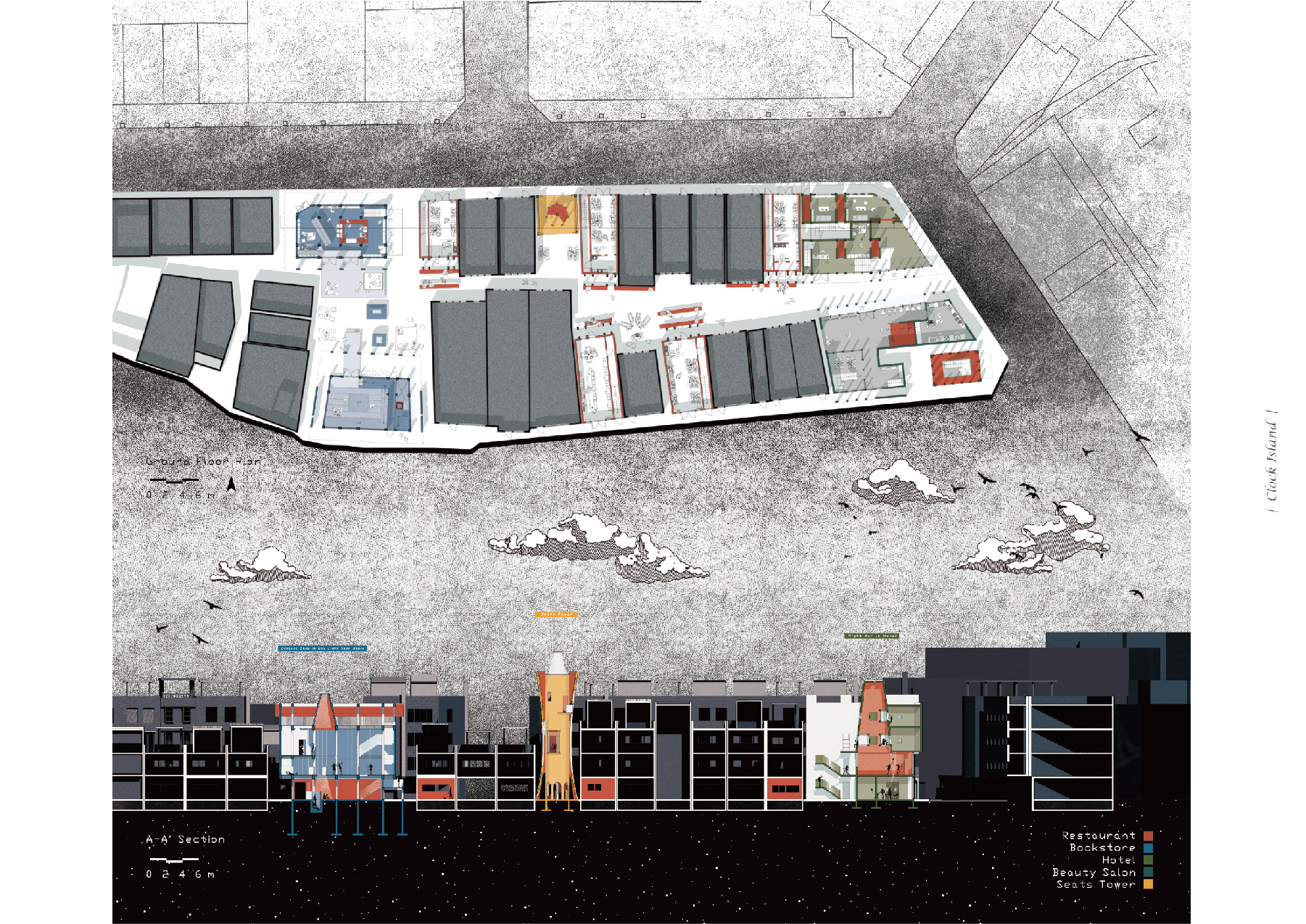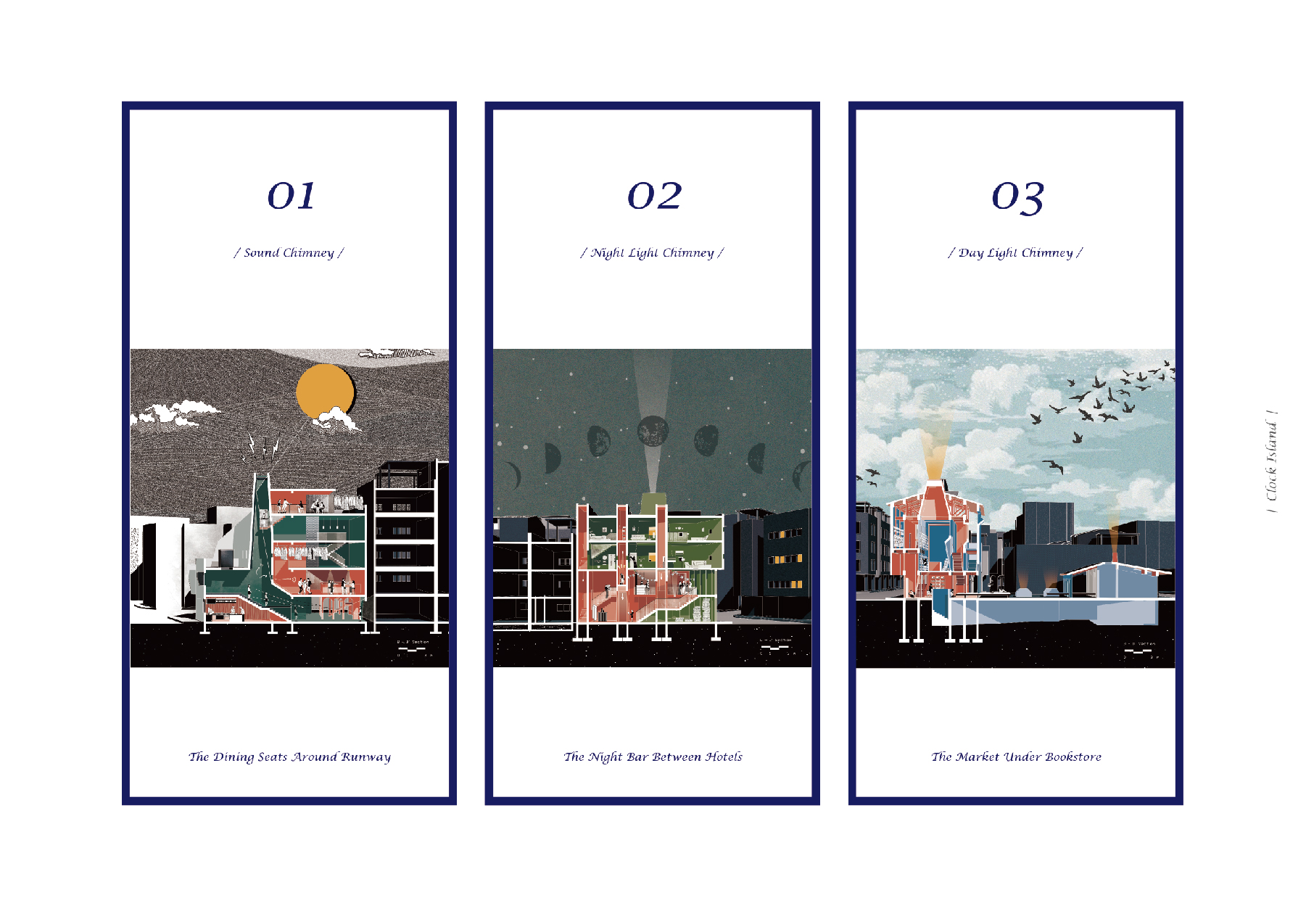












Clock Island that Swings On Time - Signal of Dining Time in Wuxing Shopping Street
台灣 / taiwan
林靜洋 / LIN, Ching-Yang
詩人余華曾說「死亡不是失去生命,而是走出了時間。」
「吃」以多種形式發生在日常,用餐習慣代表著一個地區的作息﹑文化與時間性。藉由設計一個被時間信號包圍的食的場所,讓用餐的人們能隨著空間的變化捕捉時間,餐廳能在不同時段表現出相應的狀態,這是一個來自隱藏信義常民的地域性時鐘,轉動著居民生活的故事。
時間的信號來自鄰居的聲音、陽光的穿透、活動的改變……在時間島,感受其微小卻富生命力的變化。
The act of “eating” continues to occur in our daily lives. Diet represents the culture and timeliness of a region. By designing a new dining place surrounded by local time signals, people who are eating can capture time as the space changes, and the restaurant can show the corresponding state at different timing. This is a regional clock from ordinary people in Xinyi, revealing the stories of residents’ lives.
In clock island, try to find and feel time by small but vital changes around you.
「死亡不是失去生命,而是走出了時間。」 – 余華《在細雨中呼喊》
「吃」以多種形式發生在日常,獨特飲食習慣代表著一個地區的作息﹑文化與時間性。信義區吳興商圈作為吃的街區,屬於早餐到宵夜的用餐空間卻大同小異,在不變中死亡。藉由設計一個被時間信號包圍的食的場所,讓用餐的人們能隨著空間的變化捕捉時間,餐廳能在不同時段表現出相應的狀態,這是一個來自隱藏信義常民的地域性時鐘,轉動著居民生活的故事。
吳興街位於無時性信義計畫區的邊界,機能多樣性極高。任何商店皆有機會是餐廳和小吃的鄰居,街道性質隨著一天的變化而替換。裁縫店﹑郵局與影印店豎立在餐廳之間,於非用餐時段的吳興商圈獨自營業。隱藏在這些店家獨特的活動各自揭示著不同時間性卻不被閱讀。我嘗試發散這些獨特的信號,以暗示一天中不同的吃飯時間與型態。
時鐘島的餐廳由裁縫店的延伸美容院,郵局的延伸旅館,影印店的延伸書店組成。這間餐廳被拆解並展開散落於島嶼各處。曬衣服的光影宣告晴天下午茶時間的來臨,夜晚燈光的開啟暗示酒吧營業,光線在午後穿透書櫃進入室內指引市場﹑藝廊的入口。時間的信號能來自鄰居的聲音﹑陽光的穿透﹑活動的改變……
在時間島餐廳,感受其微小卻富生命力的變化。
Hua Yu once said “Death is not about losing your life; it is about living beyond the time. ”
The act of “eating” continues to occur in our daily lives in different forms. Diet represents the culture and timeliness of a region. However, the space of dining is similar from breakfast to late night meal. By designing a new dining place surrounded by time signals, people who are eating can capture time as the space changes, and the restaurant can show the corresponding state at different times.
Wuxing Street is located on the border of the timeless Xinyi planning area, with extremely high functional diversity. The tailor shop, post office and print shop standalone among restaurants, opening alone in the Wuxing business district during non-dining hours. The unique activities hidden in these stores hint at different timing in the day but are not discovered by us. I try to radiate these unique signals to imply different meals and patterns throughout the day.
This restaurant was dismantled and placed throughout the island. The signal of time can come from the sound of neighbors, the penetration of sunlight, the change of activity…
At the restaurant in clock island, try to find and feel time by small but vital changes around you.